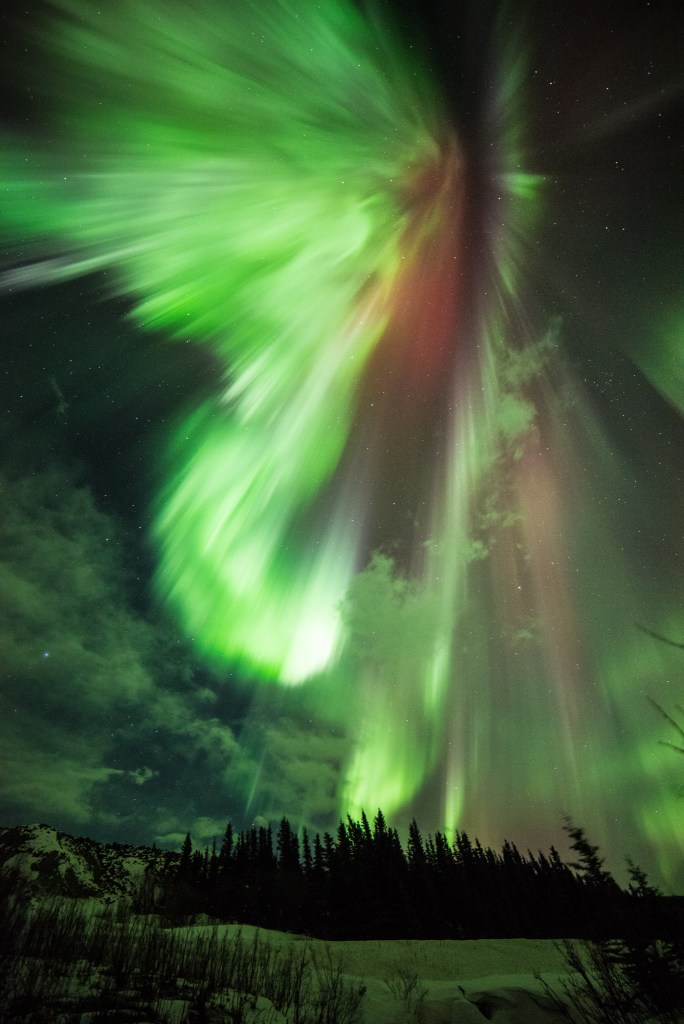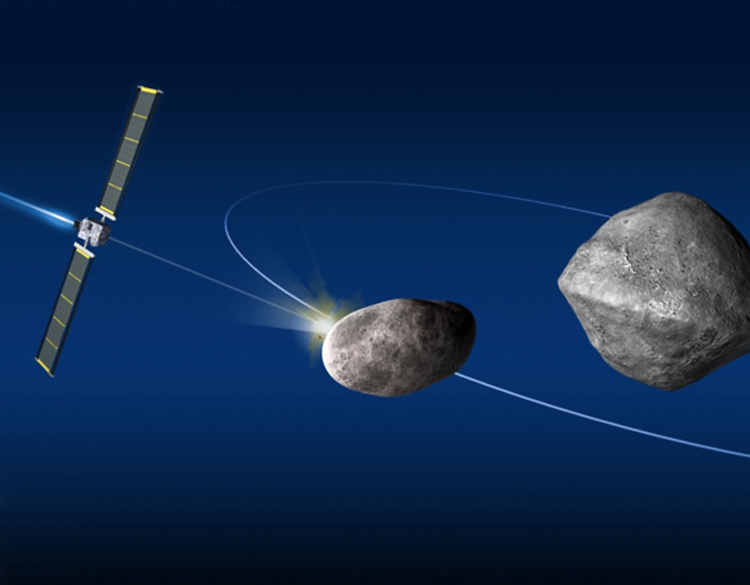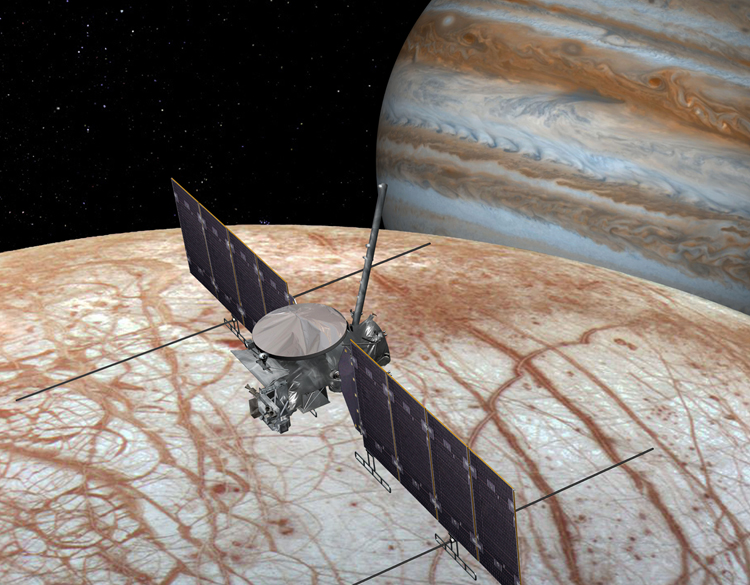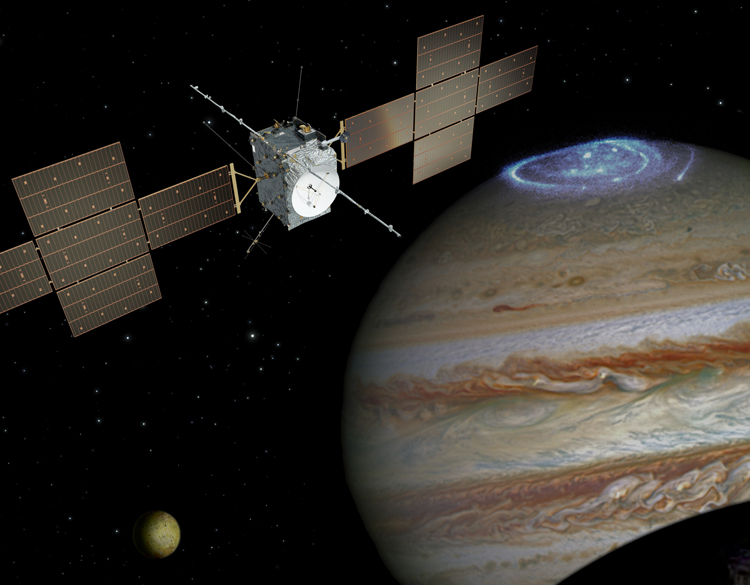Solar System Exploration Program
The Solar System Exploration Program consists of large, strategic missions that seek to advance high priority science objectives set forth by the planetary science community. Because of their complexity, NASA typically assigns these efforts directly to a NASA center or other implementing organization. Missions within the program investigate a synergistic array of science objectives with more depth and breadth than is possible for smaller, tightly focused missions in the Discovery and New Frontiers programs.
The following are missions that have been selected under the Solar System Exploration Program.
DART | Europa Clipper | JUICE | NEO Surveyor
DART
The Double Asteroid Redirection Test, or DART, was the first demonstration of the kinetic impact technique to change the motion of an asteroid in space. This was a science-driven test of one of the technologies for preventing the Earth impact of a hazardous asteroid, with the primary objective to demonstrate and measure the effects of a kinetic impact on a small asteroid. The target of the binary near-Earth asteroid Didymos was successfully rendezvoused in September of 2022.
DART was a simple, single-string spacecraft design and carried an instrument called DRACO, short for Didymos Reconnaissance and Asteroid Camera for OpNav. DRACO was a high-resolution imager for targeting and observation during the impact rendezvous.
Europa Clipper
NASA’s Europa Clipper will send a highly capable, radiation-tolerant spacecraft into long, looping orbits around Jupiter to perform repeated close flybys of its icy ocean-world moon, Europa.
The spacecraft will perform detailed reconnaissance of and collect data from Europa to allow the Science Team to study the ice shell and ocean, its composition, and its geology. This will provide invaluable information towards the top-level science goal of investigating Europa’s habitability characteristics and the possibility of harboring microbial life.
Europa Clipper will launch in Oct. 2024 from Pad 39A at NASA’s Kennedy Space Center in Florida aboard a SpaceX Falcon 9 Heavy launch vehicle. The journey to Jupiter will take approximately five and a half years, during which the spacecraft will perform a Mars Gravity Assist in Feb. 2025 and an Earth Gravity Assist in Dec. 2026.
The spacecraft’s planned arrival at Jupiter is in early April 2030 where it will first execute maneuvers to establish orbit and then begin its primary science mission that lasts for the next three and a half years.
JUICE
The Jupiter Icy Moons Explorer, or JUICE, will investigate the emergence of habitable worlds around gas giants. It is the first large-class mission in the European Space Agency’s Cosmic Vision 2015-2025 program, which focuses on learning what are the conditions for planet formation and the emergence of life.
NASA has provided three hardware contributions to JUICE: the Ultraviolet Spectrograph (UVS) instrument, Particle Environment Package (PEP)-Hi instruments, and transmitter, receiver, and electronics for the Radar for Icy Moons Exploration (RIME) instrument.
JUICE will spend three years making detailed observations of the gas giant planet Jupiter and studying three of its largest moons–Ganymede, Callisto and Europa–in unprecedented detail. The moons are thought to harbor vast water oceans beneath their icy surfaces.
The spacecraft launched in April of 2023 and is expected to reach Jupiter in July of 2031. In December of 2034, the spacecraft will enter orbit around Ganymede.
NEO Surveyor
The NEO Surveyor’s, mission is to detect and characterize the orbits of Near-Earth Objects (NEOs) at least 140m (~460ft) in diameter or larger that could be considered Potentially Hazardous Objects to Earth.
The NEO Surveyor spacecraft carries a purpose-designed, 50cm telescope with two sets of detectors optimized for observations covering mid- to longwave infrared. This wavelength choice allows NEO Surveyor to “see” the relatively warm asteroids against the cold background of space.
Utilizing this type of telescope is especially important for asteroids that may be essentially invisible to optical telescopes, either because they reflect very little in the visible light wavelengths or because they are approaching Earth from a direction with the Sun moderately behind them.
Currently planned for launch during 2028, NEO Surveyor will perform observations continuously over its five year mission period.






























